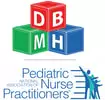Obsessive compulsive disorder (OCD) is characterized by obsessions (intrusive or unwanted thoughts) and/or compulsions (behaviors that aim to rid oneself of the obsessions and/or decrease distress). Disorders related to OCD include:
- Tic Disorders, including Tourette Syndrome
- Some Impulse Control Disorders
- Body-focused Repetitive Behaviors, including trichotillomania and dermotillomania (excoriation disorder)
- Hoarding Disorder
- PANDAS/PANS
- Body Dysmorphic Disorder
Assessment & Screening Tools
OCD
Tics/Tourette's
Trichotillomania
PANDAS/PANS
Hoarding Disorder
- Yale-Brown Obsessive-Compulsive Scale (Y-BOCS)
- Repetitive Thoughts and Behaviors (Adapted from C-FOCI)
- Nonsuicidal Self-Injury - Severity
Tics/Tourette's
- Massachusetts General Hair-Pulling Scale Trichotillomania Scale for Children
- PUTS Scale
Trichotillomania
- Trichotillomania Scale for Children (see pg. 344)
PANDAS/PANS
- Symptom Scales
Hoarding Disorder
- Structured Interview for Hoarding Disorder (Pertusa, 2013) (not validated in children/adolescents)
- Hoarding Assessment Tool (Steketee & Frost, 2007) (not validated in children/adolescents)
- Hoarding Rating Scale self report tool (Tolin, Frost & Steketee, 2010) (not validated in children/adolescents)
Position Papers & Practice Parameters
- AACAP's Practice Parameter for the Assessment and Treatment of Children and Adolescents with Obsessive-Compulsive Disorder (includes section on Tic Disorders)
Articles
- A meta-analysis of CBT and medication for child obsessive-compulsive disorder: moderators of treatment efficacy, response, and remission (McGuire, Piacentini, Lewin, et al, 2015)
- Obsessive-compulsive disorder in children and adolescents (Krebs & Heyman, 2015)
- Childhood obsessive-compulsive disorder (Sarvet, 2013)
- A review of obsessive-compulsive disorder in children and adolescents (Boileau, 2011)
Resources
|
Organizations
|
